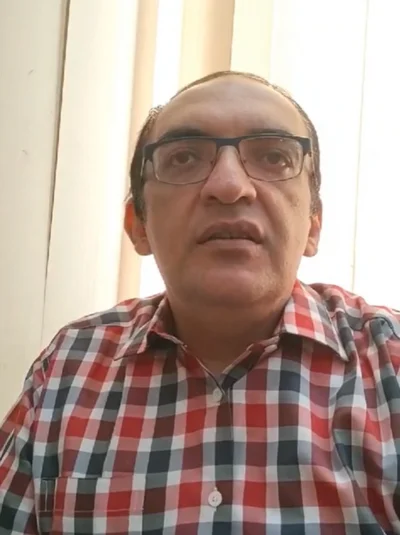Introduction
Maximizing NFT Success: The Non-Fungible Token (NFT) industry is a rapidly growing market. As an NFT project founder, staying informed about the latest market movements and communication strategies is crucial to remain competitive.
According to a report by NonFungible, the NFT market reached 18.6 million in 2022, and it is expected to be aggressive in the coming years. The use of whitelists in the NFT community has become increasingly important as a means to ensure that the community is composed of individuals who are genuinely interested in the project and are more likely to participate in the ecosystem.
Additionally, recent data suggest that the use of whitelists can also increase the chances of a project’s success. A study by blockchain research firm Chainalysis found that projects that used whitelists had a 30% higher chance of success than those that didn’t.
Stay Ahead of the Game: Understanding the Evolution of Whitelist Strategies for Maximizing NFT Success
The whitelist strategy has undergone a significant transformation over time. As the NFT market has evolved, so have the strategies used to manage whitelists. In the past, engagement farming methods were commonly employed, such as asking community members to engage with a specific tweet or react to a bot on Discord. (NFT Marketing Strategy Complete Guide)
However, these strategies have become less effective in recent times. This change can be attributed to shifts in the NFT market, specifically the departure of a significant portion of the “Z money” buyer persona and the emergence of the “Finney” buyer persona. The “Z money” persona is characterized by their tendency to invest in projects without prior research, and they tend to leave the space during market downturns. The “Finney” persona, on the other hand, is more selective in the projects they choose to invest in.
They tend to be in their late 20s or early 30s, with full-time jobs in a technical field such as data analytics, banking, engineering, or finance. They buy into projects for what the project could build and are longer-term holders. As a result, the whitelist strategy has adapted to become more exclusive and selective, catering to the needs of the remaining “Finney” buyer persona.

Decode the NFT Market: Understanding the Different Buyer Personas and How to Attract Them
Three primary buyer personas exist in the NFT market: X collectors, Finney, and Z money. X collectors possess a deep passion for collecting and are motivated by the aesthetic value of NFTs. They tend to have a higher net worth and are typically older, with a median age of 42. They are less concerned with the financial aspect of NFTs and more focused on the art and cultural value of the NFT. Finney is characterized as someone in their late 20s or early 30s with a full-time job in a technical field such as data analytics, banking, engineering, or finance. They tend to buy into projects for what the project could build, as they are longer-term holders and have become more selective in the type of projects that deserve their attention.
On the other hand, Z money is a younger generation of buyers who are more interested in the financial aspect of NFTs. They tend to come into projects without prior research, driven by FOMO, and create buy and sell pressure on secondary markets. They have been characterized as less patient and more focused on short-term gains. They tend to leave the space during market downturns. It’s worth noting that these buyer personas are not mutually exclusive, and an individual may have traits of multiple personas, but one of them tends to be dominant. Understanding these buyer personas is essential for NFT project founders to adapt their whitelist strategies accordingly and attract the correct type of buyers for their projects.

Whitelist Strategies: Lottery vs Auction: Which is Best for Your Project?
The new whitelist strategy is an approach that allows projects to attract a wide range of buyers by creating a sense of exclusivity and generating significant revenue. This strategy is broken down into two main methods: lottery and auction. The lottery system is a fair and transparent method of randomly selecting individuals from a pool of applicants who have expressed interest in the project. The selection process is usually based on criteria established by the project team, such as the applicant’s level of engagement with the project or their reputation within the community.
This method is beneficial for projects that want to create a sense of exclusivity and attract a wide range of buyers, as it allows everyone an equal chance to participate and be a part of the project. For instance, In 2017, a total of 28,000 individuals were selected from a pool of over 200,000 applicants for the lottery system of a well-known cryptocurrency project, which created a sense of excitement and anticipation among the community.
On the other hand, the auction system involves selecting individuals who bid the highest price for the project. This method is beneficial for projects that want to generate significant revenue from their whitelist sale and attract high-net-worth buyers.
For example, In 2020, a project had generated $8 million in revenue by using the auction system, where the minimum bid was $50,000. This approach is ideal for projects that want to raise significant capital and attract investors with deep pockets.
Both approaches have their benefits, and it’s up to the project team to decide which works best for them. The lottery system is a great way to create a sense of exclusivity and attract a wide range of buyers, while the auction system is an effective way to generate significant revenue and attract high-net-worth buyers.
Explore our other insights!
What is the Technology behind NFTs?
Introduction The technology behind NFTs (Non-Fungible Tokens) is based on blockchain, where each NFT is coded with its
What is the NFT for Digital Rights Management?
Introduction A non-Fungible Token, commonly referred to as NFT, is a computerized resource that cannot be replicated with
The Complete Guide for 2023: Polygon NFTs
Introduction In this comprehensive guide, You will explore about Polygon NFTs for 2023. Also get the information to















